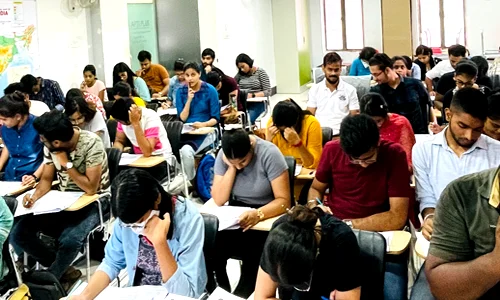



Cyclone Senyar, the first November cyclone to hit Indonesia, made landfall on Sumatra on November 26, 2025. Formed unusually in the Malacca Strait, it rapidly intensified to 70–90 km/h, highlighting the growing impact of climate change and warming seas on rare regional cyclogenesis.
Click to View MoreThe sub-plinian eruption of Ethiopia’s Hayli Gubbi volcano sent a stratospheric ash plume toward India via subtropical jets, threatening aviation and engines. Its sulphur dioxide release may cause brief global cooling. The event highlights the need for stronger international monitoring and exposes aviation and ecosystem vulnerabilities.
Click to View MoreTwo developing systems in the Bay of Bengal may trigger a Fujiwhara interaction, where their circulations influence each other and create major uncertainty in the storm’s final path and strength. Divergent IMD and global model forecasts heighten risks, making coordinated early warnings essential for vulnerable coastal regions.
Click to View MoreIndia recently hosted the 10th APDIM Session in New Delhi, powerfully reinforcing its regional leadership in Disaster Risk Reduction (DRR). The collaboration with UN ESCAP's APDIM focuses on leveraging geospatial tools, early warning systems, and capacity building across the Asia-Pacific.
Click to View MoreA PLOS Climate update reveals India has warmed by 0.9°C since 1901, leading to intensified Arabian Sea cyclones, rising marine heatwaves, and Himalayan ice loss. Urgent action is needed for adaptation, resilient infrastructure, and climate-smart agriculture to safeguard water security and coastal communities.
Click to View MoreWHO has opened a Pandemic Preparedness and Emergency Response site at AIIMS New Delhi to act as a regional hub. It will strengthen health security through training, simulations, capacity building, and better surveillance. The initiative supports faster responses to outbreaks and aligns India with WHO’s global preparedness strategy.
Click to View MoreThe Germanwatch Climate Risk Index 2026 warns that climate disasters since 1995 have killed 832,000 people and caused $4.5 trillion in losses. Poorer nations, including India with 80,000 deaths and $170 billion losses, suffer most. Germanwatch urges urgent COP30 action on finance and ambition.
Click to View MoreTyphoon Kalmaegi, a Category 3 storm, caused widespread floods and landslides in Cebu, Philippines. This disaster, following recent earthquakes, prompted a national state of calamity, highlighting the Philippines' growing vulnerability to climate-related events.
Click to View MoreClimate change is increasing avalanche risks in the Himalayas. Rising temperatures and erratic weather destabilize snow and thaw permafrost, causing frequent avalanches. India must strengthen forecasting, disaster response, structural safeguards, and community preparedness to build resilience against this escalating climate threat.
Click to View MoreThe Srikakulam stampede exposes recurring institutional lapses in crowd management. Poor infrastructure, untrained personnel, and ignored NDMA protocols make such tragedies man-made. India needs proactive governance with AI-based crowd monitoring, specialized training, independent safety audits, and strict accountability to ensure safety at all mass gatherings.
Click to View MoreClimate change acts as a threat multiplier, worsening gender-based violence by deepening poverty, displacement, and resource stress. Women face higher risks of domestic abuse, exploitation, and child marriage during climate crises. Integrating gender justice and empowering women in climate action are vital for safety and sustainable development.
Click to View MoreUnchecked groundwater extraction is sinking major cities, weakening infrastructure and heightening flood and saltwater risks. India must urgently regulate borewells, enforce rainwater harvesting, and adopt integrated, science-based water governance with community participation to safeguard urban stability and secure its most vital resource—groundwater.
Click to View More
© 2025 iasgyan. All right reserved